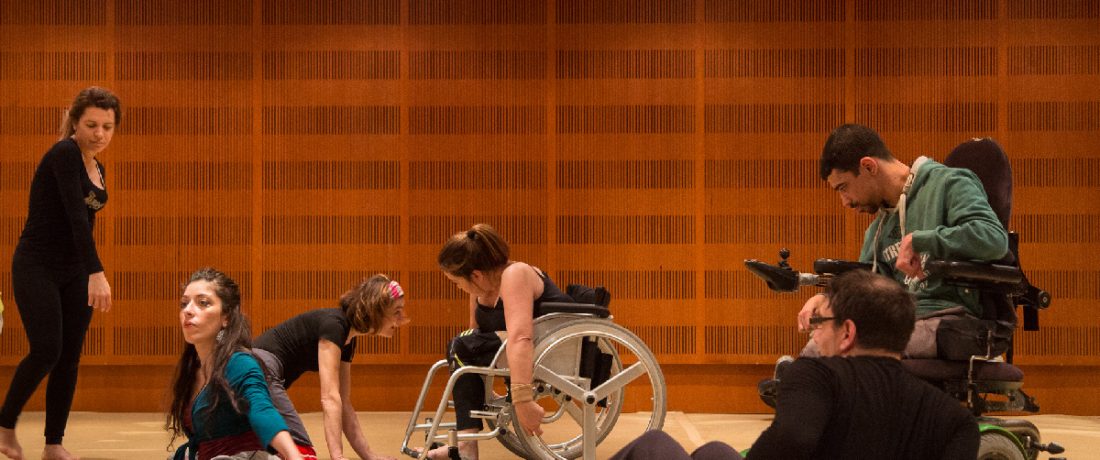
A Creative Dance Class
TARGET GROUP
adults with limited mobilityPARTICIPANTS
18-22DURATION
1.5 hoursORGANIZATION
Stopgap Dance CompanyGoal - Essential question
inspire creativity
Tips:
1. Have a set of group rules (get them to come up with these).
2.Have an assistant if the group is large.
3.Opportunity for dancers to bring in their own music to use for dance classes
Chain Reaction/Interaction (10 minutes)
Begin very close together; pay attention to the breath. If possible, place one hand on the torso of the person to the right, encourage people to breath into the hand. Using the breath as a base for movement, encourage very slow small mobilizations and then if possible create a continuous circle (if participants are unable to reach each other it does not matter). Begin a chain reaction of movement that passes around the circle, be really visually and physically responsive, if you see or feel any movement it can be passed on (sometimes there may be multiple movements being passed around the circle).
Outcomes: circle warm-up.
Spatial Awareness/Threading (10 minutes)
Still in the close circle, begin by really seeing the space and then make the circle bigger. Next, paint the space, make the circle bigger again, now reach to things or imagine threading the body into parts of the space and gradually move out of the circle (could repeat first).
Progression: get participants to create a heap of their things in the space, then using the idea of threading, imagine the body weaving into the crooks and crannies and possibly look at setting a few movements.
Outcomes: warm-up
Restriction Duets/Contact (10 minutes)
In pairs pick the same place on the arm or hand and join that place. Begin very slowly and sensitively moving as a pair, never breaking the contact, look at rolling around, measuring and moving the contact through the space.
Outcomes: Improvisation
Stop time (10 minutes)
Create an exercise that works with stillness as much as moving; it has to be about precision and direct movement. Use open instructions for them to create their own version of the movement. Moving on from this, get the group to split into 3’s, 4’s depending on the size of the group. From here, get them to move together across the space to find a quality universally and to encourage dancing together. Depending on how together they can be, add changes in music half way across the space.
Outcomes: Articulation
Stop, Action, Motion/Focus (10 minutes)
In pairs, one travels forward and has their focus somewhere, they pause, the second dancer moves passed them and changes where the focus is. Dancer 1 moves passed dancer 2 and again changes the focus, continue to the end of the room.
Progression: you could add movement in the arms, or give them an action with the head that they have to gradually complete as they move cross the space, exp. moving the head from left to right.
Outcomes: Travelling
Blocking/Qualities (10 minutes)
Use a set of instructions that play with qualities and that work with the individual’s movement but in a set group timing, exp. melt for four counts, drop for one count, look forwards for 6 counts.
Outcome: Sequencing
Storytelling (30 minutes)
Use your own experience (the teachers) and write an account of it, read it to the group but try and be theatrically involved in the words so that they can read into the emotion or physicality of the story. They then think of 3-4 moments that stand out and adopt an emotion or movement that they think helps to communicate the story. Then read the story again with the participants behind you like a chorus.
Outcome: Learn how to bring theatricality into performance.
